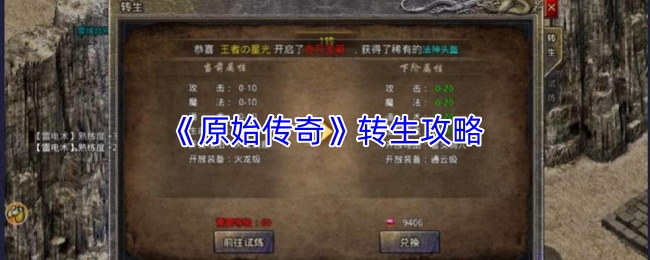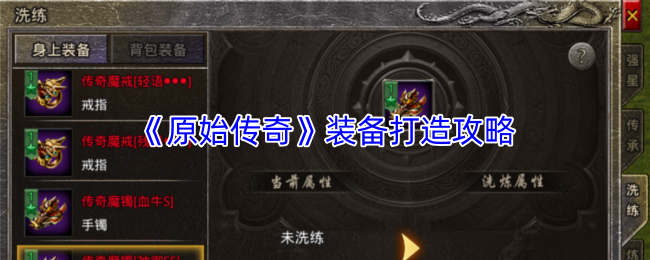linux中的list源码分析
时间:2011-04-08 来源:westfly
网上关于list的源码分析很多,这里只是学习做比较。
list的数据结构定义
/* *双链表 */
struct list_head {
struct list_head * next, ** prev;
};
或许我们比较习惯如下的形式
struct list_head {
struct list_head * next;
struct list_head * prev;
};
前文已经说明,这与传统的经典定义有差异,只有链接指针,而无数据节点。这样做是为了带来数据定义的通用性。在C++中,使用模板技术来实现,而C中并没有相关的技术,那么如何访问到节点上的数据呢,成为面临的挑战之一。
1.声明
关于的list的声明
#define LIST_HEAD_INIT(name) { &(name), &(name) }#define LIST_HEAD(name)\
struct list_head name = LIST_HEAD_INIT(name)
#define INIT_LIST_HEAD(ptr) do{\
(ptr) -> next = (ptr);(ptr) -> prev = (ptr);\
} while ( 0 )
LIST_HEAD_INIT(name)将 name 的地址直接分别赋值给 next 和 prev ,那么它们事实上都指向自己,也形成一个空链表(此处存疑)。
宏LIST_HEAD(name) ,它本质是一个定义并初始化变量。
INIT_LIST_HEAD(ptr)是用来在运行时进行初始化的,特别是list安全删除的时候。
注释,在最新版2.6的linux中,该宏已经修改为内联函数,这样做类型是安全的吧。代码如下
static inline void INIT_LIST_HEAD(struct list_head *list)
{
list->next = list;
list->prev = list;
}
从运行时初始化来看,linux下的list_head是个循环双链表,这从判断是否为空可以验证。代码如下
/**
* list_empty - tests whether a list is empty
* @head: the list to test.
*/
static inline int list_empty(const struct list_head *head)
{
return head->next == head;
}
2.插入节点
/* 添加节点 */static inline void list_add( struct list_head * new , struct list_head * head);
static inline void list_add_tail( struct list_head * new , struct list_head * head); list_head是个循环双链表,所以list支持在节点前和节点后插入新的节点。实际上, list_add 和list_add_tail都是转调函数__list_add来实现的,只是传递的参数不一样。
前者调用参数为__list_add(new, head, head->next);
后者调用参数为__list_add(new, head->prev, head);
__list_add的实现代码如下
/* *new--待插入的节点
prev--插入后new的前一个节点
next--插入后new的后一个节点
*/
static inline void __list_add( struct list_head * new ,
struct list_head * prev,
struct list_head * next)
{
next -> prev = new ;
new -> next = next;
new -> prev = prev;
prev -> next = new ;
}
注意:Linux下第一个参数为待插入的节点,有C++思维的人比较习惯第二个参数为待插入节点。同时要要注意的是第二个参数不能为空。同时,参数new在C++中为关键字,无法编译通过的。
 View Code
View Code
/**有热心的同学画了示意图,如下
* list_add - add a new entry
* @new: new entry to be added
* @head: list head to add it after
*
* Insert a new entry after the specified head.
* This is good for implementing stacks.
*/
static inline void list_add(struct list_head *new, struct list_head *head)
{
__list_add(new, head, head->next);
}
/**
* list_add_tail - add a new entry
* @new: new entry to be added
* @head: list head to add it before
*
* Insert a new entry before the specified head.
* This is useful for implementing queues.
*/
static inline void list_add_tail(struct list_head *new, struct list_head *head)
{
__list_add(new, head->prev, head);
}

2.删除元素
由于数据域与指针域分离,与传统意义上的删除——释放节点空间 有区别,此处只是将节点从链表中摘取下来。
/* ***删除节点自身*** */list_del的实现为
static inline void list_del( struct list_head * entry);
static inline void list_del_init(struct list_head *entry)
/* *
* list_del - deletes entry from list.
* @entry: the element to delete from the list.
* Note: list_empty() on entry does not return true after this, the entry is
* in an undefined state.
*/
static inline void list_del( struct list_head * entry)
{
__list_del(entry -> prev, entry -> next);
entry -> next = LIST_POISON1;
entry -> prev = LIST_POISON2;
}
list_del 只是简单的调用__list_del 函数。然后将 prev 、 next 指针分别被设为 LIST_POSITION2 和 LIST_POSITION1 两个特殊值,这样设置是为了保证不在链表中的节点项不可访问--对 LIST_POSITION1 和 LIST_POSITION2 的访问都将引起页故障(具体如何处理还有待看资料)。请注意这个函数的后两句话,它属于不安全的删除。
 POSITION宏定义
POSITION宏定义
/*
* These are non-NULL pointers that will result in page faults
* under normal circumstances, used to verify that nobody uses
* non-initialized list entries.
*/
#define LIST_POISON1 ((void *) 0x00100100)
#define LIST_POISON2 ((void *) 0x00200200)
如果要安全删除,用到list_del_init,其实现为
/**
* list_del_init - deletes entry from list and reinitialize it.
* @entry: the element to delete from the list.
*/
static inline void list_del_init(struct list_head *entry)
{
__list_del(entry->prev, entry->next);
INIT_LIST_HEAD(entry);
}
多了一个初始化链表节点的过程。
__list_del的实现也为简单,分别让 entry 节点的前后两个结点( prev 和 next )"越级"指向彼此即可。具体实现为
/*
* Delete a list entry by making the prev/next entries
* point to each other.
*
* This is only for internal list manipulation where we know
* the prev/next entries already!
*/
static inline void __list_del(struct list_head * prev, struct list_head * next)
{
next->prev = prev;
prev->next = next;
}
3.替换元素
/**替换元素*/
static inline void list_replace( struct list_head *old,
struct list_head *new)
static inline void list_replace_init( struct list_head *old,
struct list_head *new)
list_replace_init 是安全的调用,比list_replace多了一个运行时初始化节点的功能。
list_replace的代码实现如下,请自行画图理解
/**
* list_replace - replace old entry by new one
* @old : the element to be replaced
* @new : the new element to insert
*
* If @old was empty, it will be overwritten.
*/
static inline void list_replace(struct list_head *old,
struct list_head *new)
{
new->next = old->next;
new->next->prev = new;
new->prev = old->prev;
new->prev->next = new;
}
5.移动元素
/**移动元素*/理解了删除和增加结点,那么将一个节点移动到链表中另一个位置,其实就很清晰了。list_move函数最终调用的是__list_add(list,head,head->next),实现将list移动到头结点之后;而list_move_tail函数最终调用__list_add_tail(list,head->prev,head),实现将list节点移动到链表末尾。
static inline void list_move(struct list_head *list, struct list_head *head)
static inline void list_move_tail(struct list_head *list,struct list_head *head)
 list_move
list_move
/**
* list_move - delete from one list and add as another's head
* @list: the entry to move
* @head: the head that will precede our entry
*/
static inline void list_move(struct list_head *list, struct list_head *head)
{
__list_del(list->prev, list->next);
list_add(list, head);
}
 list_move_tail
list_move_tail
/**
* list_move_tail - delete from one list and add as another's tail
* @list: the entry to move
* @head: the head that will follow our entry
*/
static inline void list_move_tail(struct list_head *list,
struct list_head *head)
{
__list_del(list->prev, list->next);
list_add_tail(list, head);
}
 View Code
View Code










